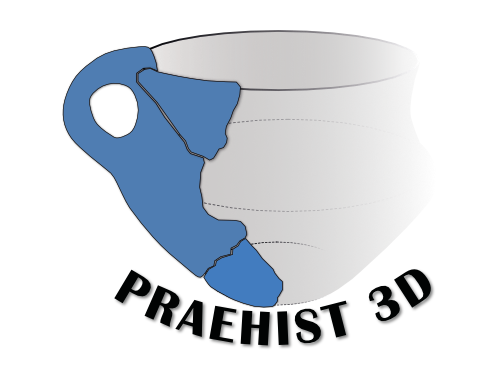Summary 3D scan and 3D print for museum replicas
This richly decorated bracteate (decorative disk made of precious metal) was to be replicated for a museum exhibition. For this purpose, I made a 3D scan of the sheet metal and prepared it for a later highly detailed SLA printout. The 3D print was then faithfully painted in several layers and positioned in the exhibition.
I used photogrammetry to capture the shiny surface of the bracteate, which is made of thin sheet metal, in order to obtain as accurate an image as possible of the fine surface decorations. I used a polarizing filter in front of both the lens and the light source to filter out the metallic sheen as much as possible during the capture.
This cross-polarization enables the almost complete elimination of shiny spots on the object and noticeably reduces disturbing noise in the 3D model.
With a diameter of only 4 cm and a thickness of 2-3 mm, the sheet metal object is difficult to capture and required some tricks during the capture and some manual masking of the images used for reconstruction. Since photogrammetry models do not automatically contain absolutely scaled sizes, I also created a quick strip light scan to transform the object into its real size.
In order to keep the printout as clean and detailed as possible, an SLA printer was used to produce the object from gray resin.
After removing the support structures and filling small holes (small holes can be caused by the supports coming off), it was time to sand. As resin dust is not exactly healthy, a mask and gloves should always be worn when sanding.
Sandpaper and sanding sponges from 180 to 1200 grit are ideal for quickly preparing the surfaces for painting. I usually use sanding sticks from Greenstuffworld, which can be used for dry and wet sanding.


Monochrome PU paint is an ideal primer, even if it takes quite a long time to dry, and then a paint job in several layers of gold and bronze tones, washes and final dry brushing. I like to use acrylic paints from the tabletop range for this. These are light-resistant, non-toxic and inexpensive. All the paints were applied with an airbrush gun to ensure even application. Except for the final dry brushing, of course.



The surface was sealed with several layers of transparent protective varnish.

Are you interested in 3D scans, prints, reconstructions, workshops or questions?
